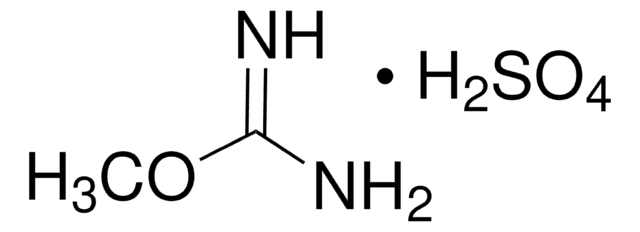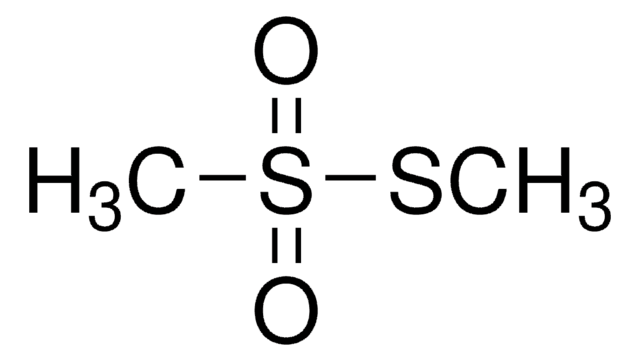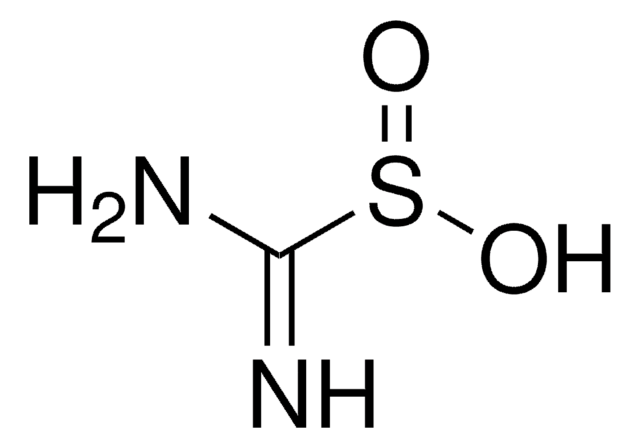455598
O-Methylisourea hemisulfate salt
99%
Synonym(s):
OMI®
About This Item
Recommended Products
Quality Level
Assay
99%
form
solid
mp
163-167 °C (lit.)
solubility
water: soluble 100 mg/mL, clear, colorless
functional group
amine
SMILES string
COC(N)=N.COC(N)=N.OS(O)(=O)=O
InChI
1S/2C2H6N2O.H2O4S/c2*1-5-2(3)4;1-5(2,3)4/h2*1H3,(H3,3,4);(H2,1,2,3,4)
InChI key
QSCPQKVWSNUJLJ-UHFFFAOYSA-N
Gene Information
human ... OPRD1(4985) , OPRK1(4986) , OPRM1(4988)
rat ... Oprd1(24613) , Oprm1(25601)
Looking for similar products? Visit Product Comparison Guide
Legal Information
Storage Class Code
11 - Combustible Solids
WGK
WGK 1
Flash Point(F)
Not applicable
Flash Point(C)
Not applicable
Personal Protective Equipment
Choose from one of the most recent versions:
Already Own This Product?
Find documentation for the products that you have recently purchased in the Document Library.
Our team of scientists has experience in all areas of research including Life Science, Material Science, Chemical Synthesis, Chromatography, Analytical and many others.
Contact Technical Service








